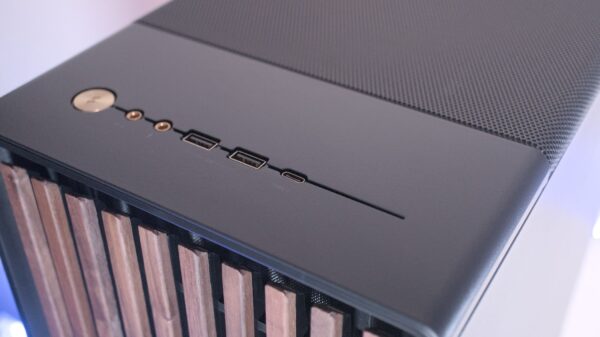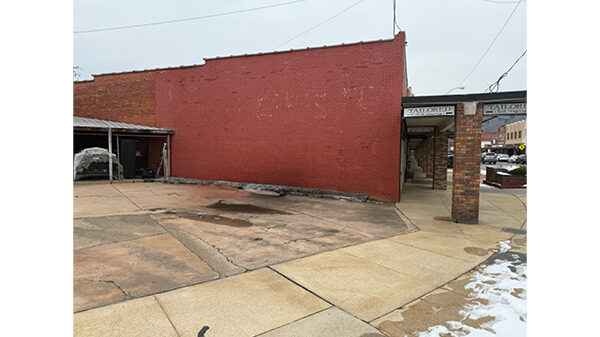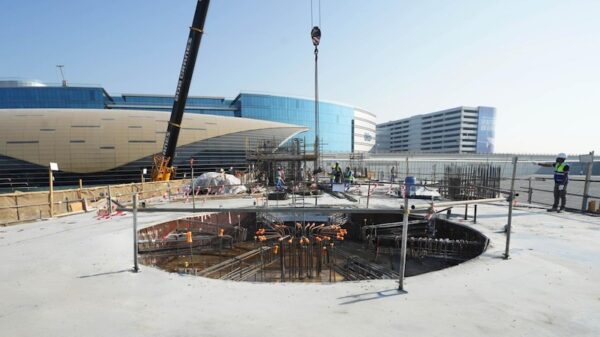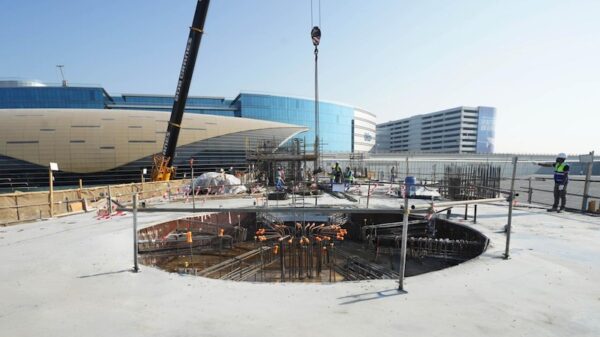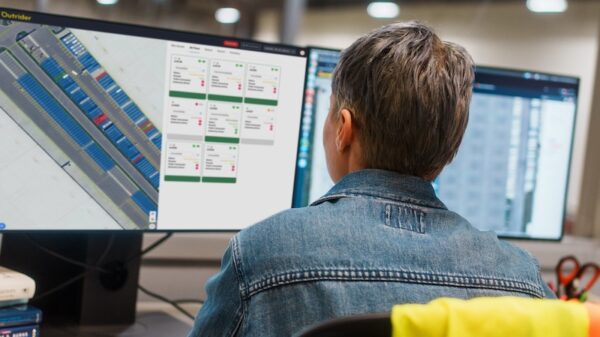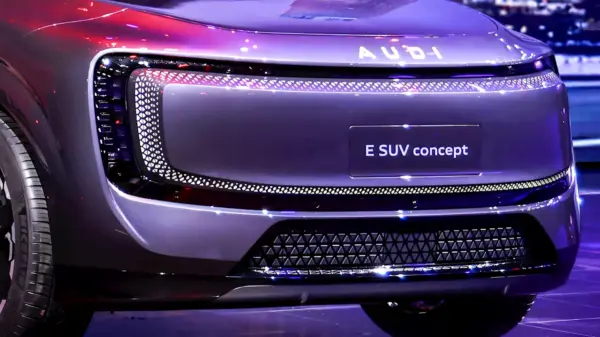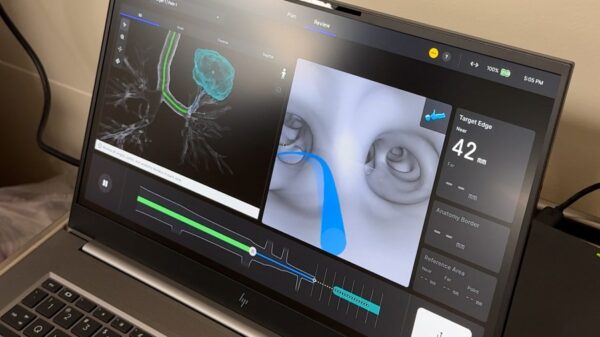A research team at the University of Pennsylvania has developed a groundbreaking 3D-printed bridge, named Diamanti, which significantly enhances carbon absorption compared to traditional concrete. This innovative project combines novel materials with an efficient design, reducing environmental impact while maintaining strength and durability.
Concrete, the most widely used manmade material globally, is responsible for approximately 8% of greenhouse gas emissions. The concrete and cement industry has grappled with the challenge of reducing its carbon footprint for years. The Diamanti project addresses this issue by using a sustainable concrete mixture and a unique design inspired by natural structures.
Nature-Inspired Design
The team, led by Masoud Akbarzadeh, an associate professor of architecture, utilized a robotic 3D printer to create complex, lattice-like patterns that mimic the porous structure of bones. This approach allows for a remarkable reduction in material use—up to 60% less—while ensuring mechanical strength. Akbarzadeh explained, “Through millions of years of evolution, nature has learned that you don’t need material everywhere. If you take a cross section of a bone, you realize that bone is quite porous, but there are certain patterns within which the load is transferred.”
Diamanti’s concrete mixture absorbs 142% more carbon dioxide than conventional concrete, thanks to its innovative design and enhanced surface area. This increased surface area further boosts carbon absorption by another 30%, maximizing the concrete’s interaction with carbon dioxide at a microscopic level.
The project, initiated in 2022 in collaboration with Swiss chemical company Sika Group, recently received funding from the U.S. Department of Energy to develop its first full-size prototype in France.
Concrete’s Environmental Impact
Despite ongoing efforts to improve sustainability, the cement industry saw its emissions increase in recent years. According to the International Energy Agency, emissions have risen due to heightened demand, with approximately 90% of these emissions stemming from cement production. The process of creating cement is inherently energy-intensive, involving the breakdown of limestone at temperatures reaching 2,000 degrees Celsius (3,632 degrees Fahrenheit), which emits significant carbon dioxide.
To mitigate this impact, researchers are exploring alternative materials and mixtures. For instance, the Diamanti project incorporates diatomaceous earth (DE), a silica-rich material derived from fossilized algae, as a partial replacement for cement. This biomineral facilitates carbon dioxide penetration and enhances the mixture’s overall sustainability. However, with global DE production only reaching 2.6 million tons in 2023, scalability remains a concern.
While DE shows promise, Du Hongjian, a senior civil engineering lecturer at the National University of Singapore, cautions that the supply chain must be evaluated for broader implementation. He emphasizes that while solutions like Diamanti provide innovative approaches, they cannot solely address the industry’s carbon footprint.
Testing the Innovation
Before deploying the Diamanti design, the team constructed a prototype bridge to test its viability. The modular design features blocks printed by a robotic arm and connected with tensile cables. Akbarzadeh noted that 3D printing reduces construction time, material use, and energy consumption by 25%, while also decreasing the need for steel by 80%, further minimizing emissions.
The initial prototype measured five meters in length and successfully demonstrated the concept. A subsequent 10-meter version, funded by Sika Group, passed rigorous load tests, exceeding expectations. Currently, this prototype is on display at the European Cultural Center in Venice as part of the Venice 2025 Architecture Biennial.
Following regulatory changes in Venice, the team shifted its focus to constructing the first full-scale bridge in Paris, where they secured approval in September 2025. Akbarzadeh is eager to implement their designs in real-world settings, continuing to monitor and evaluate performance.
Beyond bridges, the team is also exploring applications in prefabricated floor systems. While Akbarzadeh acknowledges that this project is not a one-stop solution, he envisions that Diamanti could open “a whole new world of possibilities” for sustainable concrete construction.



